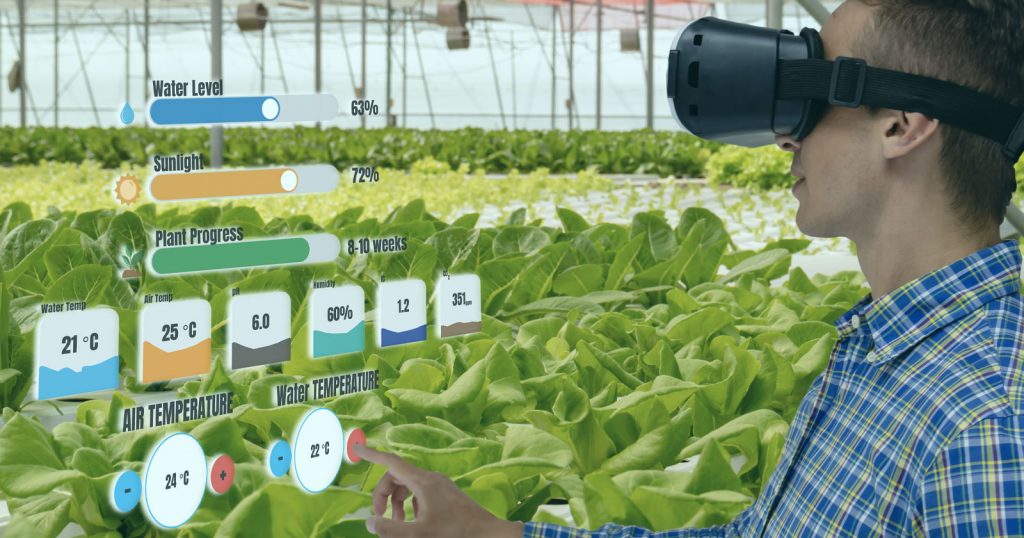The farmlands are also beginning to brace the importance of automation. You no longer require the qualifications of a ribbed muscle, undisputed stamina, or willful perseverance to survive in the farming world. The takeover of robots in the agricultural farmlands is a heatwave no one saw coming. The fully autonomous farm equipment is making a commercial entrance into the world of farmers with the intent of fully automating many tasks. This article seeks to unearth such details.
Imagine farmland that no longer requires the supervisory presence of a human to get things running in order. All the human has to do is not rush his morning coffee as the automated tractors self-drive to weed, plow, plant, and spray the cropland. The unexpected revolution in the farming sector was even a shocker to the robotic analysts. They were yet to consider its possibility. Small start-apps, however, in Australia and Canada created a stepping stone for such technologies.
Deere and CNH, being industrial leaders are yet to present their robotic candidates who will participate in the exciting world of farming. However, Industrial elites like Saskatchewan through their Dot Technology, already have an invoice on sold power platforms applicable to fully mechanized spring planting.
SwarmFarm robotics in Australia already has a profile of weed-killing robots in its resume whose dynamic flexibility also applies to spread and mowing tasks. The companies proclaim such machines to be smaller and smarter in comparison to the now replaceable gigantic machinery.
Australia’s Queensland State Arcturus Downs’ farm manager, Sam Bradford, participated in last year’s SwarmFarm pilot program early adoption. He effectively managed to kill weeds through the use of four truck-sized robots. The past years saw Mr. Bradford use a 16-ton 120-foot wide spraying machine to get rid of the same weeds. The resulting machinery resembled a gigantic-like praying mantis always left a blanket of chemicals on the target farmland.
The four robots used gave more precision through directly targeting the weeds with the set chemicals. Such a task covers over 20,000 acres and executed twice or thrice yearly. Moreover, Mr. Bradford can attest to 80% saved on chemical costs. Moreover, the environment also rips some benefits. Fewer chemicals are exposed to it, which is less hazardous to the surrounding rivers making their way to the Great Barrier Rift, whose locality is off the Eastern Coast of Australia.

The main agenda of every farmer should be the next-level farming profitability and efficiency ideologies and their execution. To be on the driver seat of agricultural adoption, one needs to implement better farming and crop-growing systems. This Spring will bear witness to the Dot-manufactured autonomous tractors that made a commercial entry through Saskatchewan company the past year. This 2019’s Dot units were, however, available on a trial run basis. Thus they required constant monitoring from the farmers that purchased them. The ones for 2020 yet have the free-will blessing from their manufacturers. Therefore the 2020 growers no longer need a seat reservation behind the steering wheel to get things done.
Dot’s CEO, Leah Olson-Friesen, states that human intelligence sitting on a cab is underutilized. Thus if replaced by robots, it can be more effective in other dynamic aspects like monitoring and maintenance of the machines that have much more precision in their input and output. The director of Precision Agriculture Technology and head of John Deere Labs, Alex Purdy, differs from Olson-Friesen’s sentiments stating that steering is not the only activity available to a farmer behind the cab’s wheel. He moreover, supports Deere’s lack of interest in launching a piece of fully autonomous equipment, stating that the currently available technology is not yet a march to factor human replacement.
He further states that the use of autonomous equipment cannot outweigh the use of machinery automation. Mr. Purdy believes that Computer Vision advancements, Deep Learning, and Artificial Intelligence are the basic requirements for the further transformation of Agricultural Machinery. Thus automation continues to define itself as a self-growth process are they will always be an improvement needed along the way.
CNH Industrial Autonomous Vehicles Product Manager, Brett McClelland, states that the case of automating a modern tractor will require an in-depth understanding of each of the thousand tasks at hand. The smaller machines will be successful scouts in the field but might struggle in preparing the ground for planting purposes. The big machines, however, have an advantage here as they can precisely rip the ground 40 inches deep to plant carrots and other crops.
Thus if farmers need improving productivity, robotic technology is the right call. The modern tractors weigh more in comparison to the farm-designed robots and often reduce productivity by compressing the soil. Getting rid of this compaction can bear witness to a 7% in crop yields. Increasing the precision of this technology will enable smaller robots to be more manageable. Accuracy will lead to efficiency, which will lead to improved yields. The robots will be timely operators and will not gamble in their functionality through thus applying inputs directly. Read more for a thorough understanding of how robots and their robotic technology come to play.









